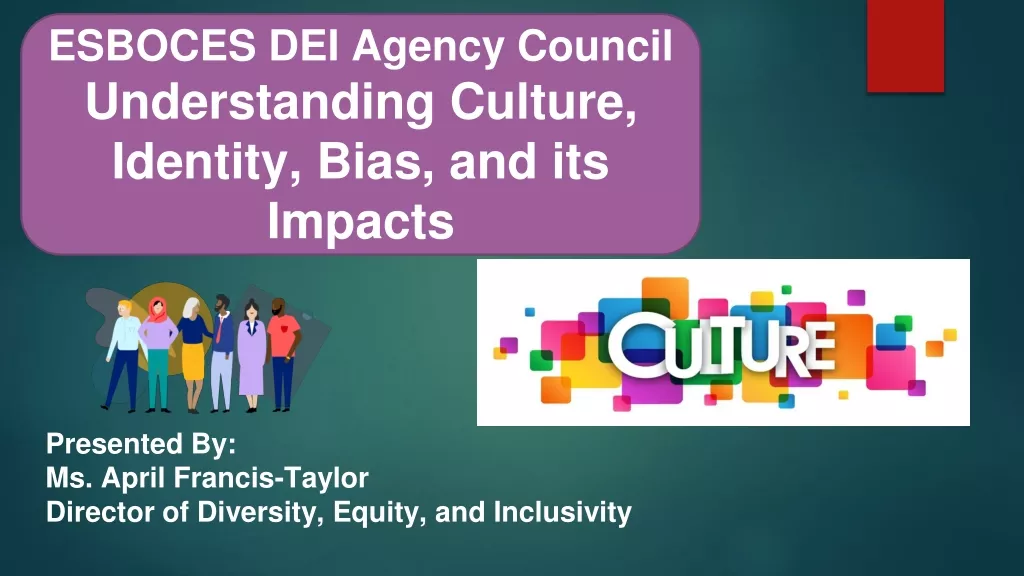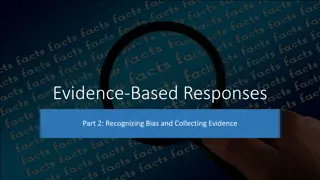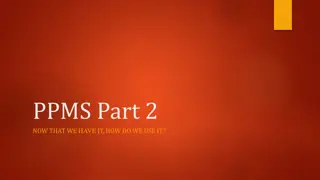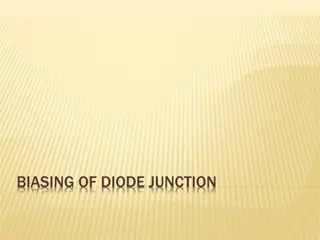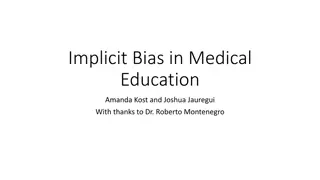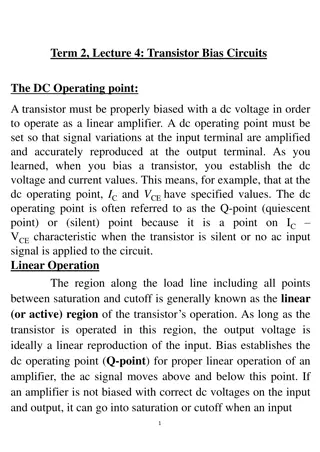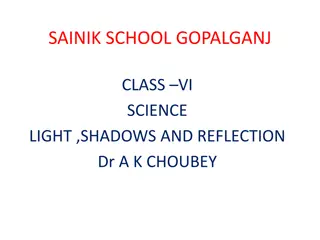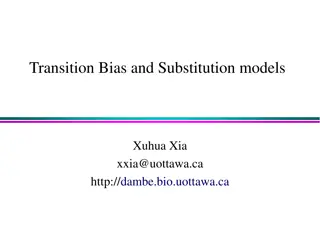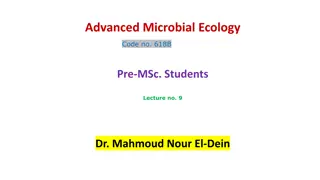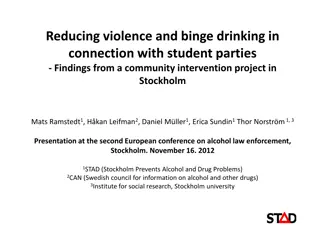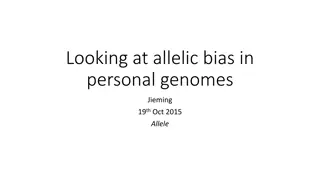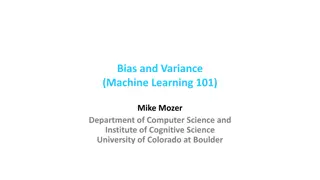Attentional Bias between Light and Heavy Drinking College Students
This study by Manuel Moreno, Alexandra Ghita, and Jos Gutiérrez-Maldonado explores attentional bias towards alcohol-related stimuli among Spanish college students based on their drinking habits. The research aims to investigate eye movement data using an eye-tracking technology to differentiate between light and heavy drinking students. The study includes objectives, methodology involving eye-tracking technology (EyeTribe), and participant criteria. Previous work on visual probe tasks is also referenced.
Uploaded on Sep 13, 2024 | 0 Views
Download Presentation

Please find below an Image/Link to download the presentation.
The content on the website is provided AS IS for your information and personal use only. It may not be sold, licensed, or shared on other websites without obtaining consent from the author.If you encounter any issues during the download, it is possible that the publisher has removed the file from their server.
You are allowed to download the files provided on this website for personal or commercial use, subject to the condition that they are used lawfully. All files are the property of their respective owners.
The content on the website is provided AS IS for your information and personal use only. It may not be sold, licensed, or shared on other websites without obtaining consent from the author.
E N D
Presentation Transcript
Attentional bias between light and heavy drinking college students Manuel Moreno1, Alexandra Ghita2*& Jos Guti rrez-Maldonado2 1Department of Cognition, Development and Education Psychology, University of Barcelona 2 Department of Clinical Psychology and Psychobiology, University of Barcelona 9/13/2024 1
Content 1. Introduction 2. Objectives of the study 3. Method 4. Results 5. Conclusions 6. Future research directions 9/13/2024 2
1. Introduction Attentional bias and alcohol consumption 9/13/2024 3
1. Introduction Attentional bias alcohol craving 9/13/2024 4
1. Introduction Current research on Human-Computer Interaction (HCI) 9/13/2024 5
2. Objectives of the study Previous work - Christiansen, Mansfield, Duckworth, Field, & Jones (2015) -> Visual Probe Task Cristiansen, P., Mansfield, R., Duckworth, J., Field, M., & Jones, A. (2015). Internal reliability of the alcohol- related visual probe task is increased by utilising personalised stimuli and eye-tracking. Drug and Alcohol Dependence, 155, 170 174. http://doi.org/10.1016/j.drugalcdep.2015.07.672 9/13/2024 6
2. Objectives of the study Primary objective - To create a visual attention task to explore attentional bias towards alcohol-related stimuli using the eye- tracking technology in Spanish drinking college students. Secondary objectives To explore whether eye movement data such as first gaze towards the cues, total dwell timeand fixations can differentiate between light and heavy drinking college students. 9/13/2024 7
3. Method Participants - N = 30, M = 22 yrs (SD = 4.29) Cut-off score Alcohol Use Disorder Identification Test (AUDIT; 7 for men and 5 for women) Gual, A., & Colom, J. (2005).Identificaci n temprana del bebedor de riesgo. Medicina Cl nica, 125(19),734 735. http://doi.org/10.1016/S0025-7753(05)72172-2 9/13/2024 8
3. Method Apparatus - The eye-tracking technology The EyeTribe 9/13/2024 9
3. Method Stimuli - Neutral and alcohol-related images Spanish National Survey on Alcohol Consumption (2011-2012) ( Encuesta Nacional de Salud 2011/12. Consumo de alcohol) 1 2 3 9/13/2024 10
3. Method Stimuli - Neutral and alcohol-related images Spanish National Survey on Alcohol Consumption (2011-2012) ( Encuesta Nacional de Salud 2011/12. Consumo de alcohol) 9/13/2024 11
3. Method Instruments AUDIT + Visual Attention Task (VAT) 9/13/2024 12
3. Method Procedure 9/13/2024 13
3. Method Procedure 9/13/2024 14
4. Results a. Dwell time Total fixation time 60 55 Percent Light drinkers 50 Heavy drinkers 45 40 Alcohol 51.2426052 48.7573948 49.2715111 50.7284889 Neutral Alcohol Neutral LD HD 9/13/2024 15
4. Results b. Fixations Fixations 60 55 Percent LD 50 HD 45 Alcohol 49.8095946 50.1904054 51.143699 Neutral 40 LD HD Alcohol Neutral 48.856301 9/13/2024 16
4. Results c. First gaze First fixation 60 55 Percent Light drinkers 50 * Heavy drinkers 45 Alcohol 44.988345 47.4888748 52.2568341 Neutral 53.962704 LD HD 40 Alcohol Neutral 9/13/2024 17
5. Conclusions * First gaze may be an important variable to differentiate between light and heavy drinking college students. * As an assessment instrument, the eye-tracking technology can provide significant data in terms of eye-movement activity. * This is important because the eye-tracking technology can used to complement existing instruments in prevention programs targeting young adults. 9/13/2024 18
Limitations Sample! 9/13/2024 19
6. Future research directions Implementation of the eye-tracking technology as an assessment instrument in patients diagnosed with Alcohol Use Disorder. 9/13/2024 20
Thank you for your attention! Acknowledgments. This study was supported by the Spanish Ministry of Sanidad, Servicios Sociales e Igualdad. Delegaci n del Gobierno para el Plan Nacional sobre Drogas (FEDER/UE/Project 2016I078: ALCO-VR. Protocolo basado en realidad virtual para el tratamiento de pacientes con trastorno por uso de alcohol severo ). 9/13/2024 21


